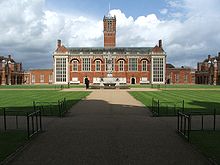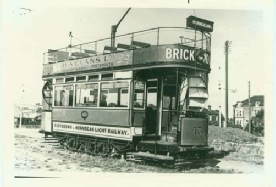



The Parish Church of St George the Martyr, Waterlooville

Festival Edition 2013
Gregorian and other chants
Christ’s Hospital School
On 28th February Mr Hailey came to give us a talk and slideshow about his 35 years from 1962 of being a teacher at Christ’s Hospital School in Horsham.
Christ’s Hospital’s beginnings go back to 1552. King Edward VI founded three hospitals, including Christ’s Hospital, which was to be used for the care and education of children.
The school prospered but in 1665 the Great Plague claimed the lives of 32 of its children. In the following year the Great Fire of London happened, the hospital was severely damaged. At the end of the century the hospital had been fully restored.
The Taunton Commission of 1864 proposed that the school make more places available for girls, four years later the Christ’s Hospital Band was formed. In addition to leading the lunch time march, the Band now leads the school on the St Matthew’s Day March and the Lord Mayor’s Show in London.
A farm site owned by the Aylesbury Dairy Company was bought in 1892. On May 29th 1902 an estimated 660 boys moved to the new site at Horsham.
In 1985 the school became a truly co-
The school uniform is a long dark blue belted coat with knee breeches, yellow socks and white neck bands.
At the start of a day the bell would ring at 7.15. There were 25 beds in a dormitory. Where the boys washed there was no door to the toilet. They would line up to walk into the dining hall. After breakfast it was back to House, they had three lessons, then a short break of milk and biscuits and another two more lessons. 1.15, the Band marched into the Dining Hall. After which it was back to House to get ready for games, these were Rugby, Hockey or Soccer. This was finished at 5.45. Sleep time was at 8.15. The mattress was made from horsehair and carpets were laid on the floors in 1985.
The dining tables sat up to 12 children. They would stop talking, say Grace and then sit down. They were all well fed. Their trays were put on a conveyer belt which took them back to the kitchens to be washed and put away before the next meal time.
The pupils have opportunities to go away to countries on skiing trips and if any families couldn’t afford to pay for their child to go, then the trip would be paid by the school, no pupil was ever left out, everyone had the chance of going.
When the time came for pupils to leave, they would be given a bible. They would march in the middle of the chapel to the Head Teacher. Outside the Band would form the star of David. There were about 120 members in the band. All the instruments are provided by the school. The school takes pupils from the ages of 10 or 11 to 19 years old.
It is around £25,000 a year fee for a pupil to stay at this school. The pupils come from all various types of backgrounds, such as their father being a window cleaner, postman or at the other end of the scale a solicitor or doctor.
History of Portsmouth City Transport
Eric Watts came to give us a talk and slideshow on 14th March. The talk was entitled History of Portsmouth City Transport, 1901-
In 1840 the first horse drawn bus service began connecting Southsea and North End travelling via the Dockyard and Commercial Road. They were followed in 1865 by horse drawn trams. In 1847 the Railway reached Portsmouth.
The first tram route using rails ran between Portsmouth Town Railway Station and Clarence Pier.
The Portsmouth Street Tramway Company opened their first route in 1873, but by 1880 the Provincial Company controlled most of the tramways in Portsmouth. Portsmouth Corporation were able to take over all the horse drawn tramways with the exception of the original line from the Town Station to Clarence Pier.
In 1903 a tram called the Horndean Light Railway began running between the City and Horndean. The trams were called the Green Cars because they were emerald green and cream. The light railway closed in 1935 and was replaced by buses.
Portsmouth Corporation Transport was a tram, trolleybus and bus operator formed in 1898. Trolleybuses replaced trams for the first time on the South Parade Pier to Cosham. The Corporation soon started the process of electrifying the system and introduced new double deck trams and one single deck toastrack into operation.
In 1920 buses began to appear with lower floors and easier access, the driver having his own enclosed cab, sitting beside the engine. The Portsmouth trolleybus system started in 1934. It gradually replaced the Portsmouth tramway network.
In the 1970’s many women wanted to participate in the male dominated culture on their own terms. The Equal Pay Act of 1970 took effect in 1975.
Until the 1970’s and early 1980’s conductors or clippies were a common feature on many local bus services in larger towns and cities in the UK. Throughout the 1970’s the proportion of urban bus routes operated with conductors declined, as older vehicles were steadily replaced with new buses equipped for one person operation.
In the early 1980’s bus conductors were largely obsolete in all cities except London and Dublin.
In 1987 Eric Watts wrote a book entitled Fares Please. It is worth having a look through this book, it has many pictures of various trams and buses etc in it. It is very interesting.
Priscilla Barlow

